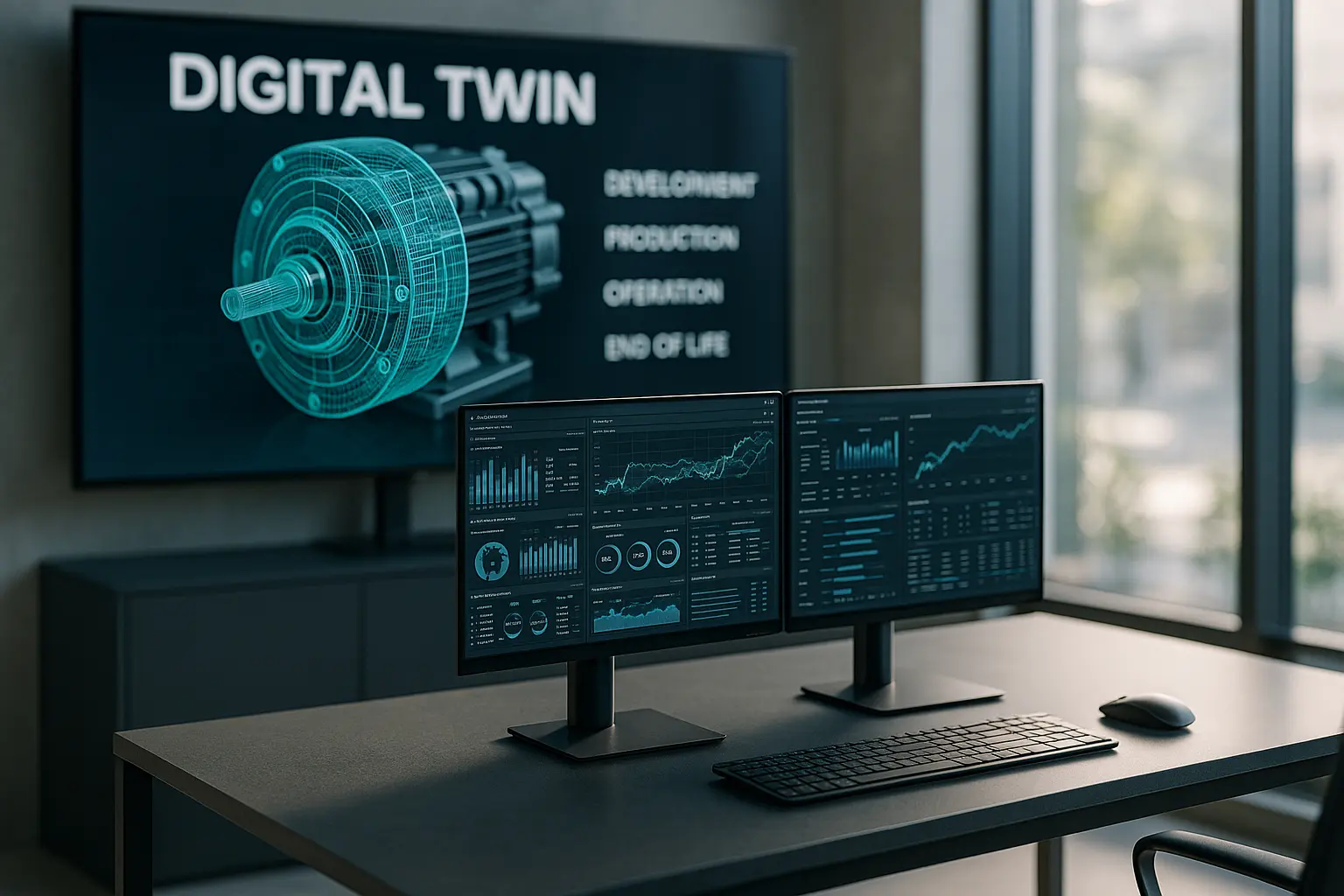In an era where technology evolves at the pace of light, the concept of Digital Twins is no longer just for the technophile elite. Today, it is reshaping the landscape of Product Lifecycle Management (PLM), offering a groundbreaking approach to managing the entire lifecycle of a product from conception through design, manufacturing, and continuing through operations and disposal.
Imagine having a virtual counterpart of a physical product that evolves alongside it in real-time, capturing every nuance, hiccup, and milestone. This isn’t just a hypothetical future—it’s the present reality that businesses are embracing to unlock unparalleled efficiencies, performance insights, and innovation opportunities. Through the integration of data, engineering, and software, Digital Twins are rewriting the rules of product development and management.
This journey into the world of Digital Twins will illuminate how they are rapidly transforming traditional PLM into a dynamic, data-driven powerhouse, enhancing performance, addressing issues before they manifest, and paving the way for sustainable product development. Let’s delve into the transformative world of Digital Twins and the undeniable advantages they bring to the product lifecycle.
Understanding the Digital Twin: A Revolutionary Concept
At its core, a Digital Twin is a digital replica of a physical product, a real-time simulation that mirrors the life of its physical counterpart. While the term might conjure images of science fiction, in reality, it is grounded in cutting-edge technology that merges simulation, data analytics, and IoT.
The inception of the Digital Twin concept can be traced back to industries like aerospace, where intricate systems demanded rigorous testing before physical production. Today, the application has transcended niche industries, finding a pivotal role in manufacturing, engineering, and product design.
Why embrace Digital Twins? The answer lies in their ability to provide a real-time, data-rich environment that offers insights into product performance, potential issues, and optimization opportunities. By leveraging PLM software, businesses can capture and analyze data continuously, making informed decisions that drive product innovation and lifecycle management.
Moreover, Digital Twins facilitate a seamless integration between physical and digital realms. They allow for proactive maintenance, predicting issues before they arise, thus reducing downtime and enhancing overall efficiency. By offering a vivid picture of how a product performs under various conditions, Digital Twins serve as a crucial tool in the product development arsenal, enabling teams to iterate designs based on real-world data rather than assumptions.
The Role of Digital Twins in Product Design and Development
In the bustling corridors of product design and development, Digital Twins are the unsung heroes driving innovation. Gone are the days of trial-and-error approaches that cost time and resources. Today, Digital Twins offer an unprecedented avenue for simulation, allowing designers and engineers to explore countless iterations within a virtual space.
Think of Digital Twins as the ultimate sandbox for product exploration. Teams can test new configurations, materials, and designs without the immediate need for physical prototypes. This accelerates development cycles, enabling faster time-to-market and ensuring that every tweak and adjustment is based on concrete data rather than speculation.
By harnessing the power of Digital Twins, companies can navigate the complexities of modern engineering with precision. These virtual replicas provide a clear lens into the lifecycle performance of a product, from its inception to production stages, ensuring that designs are optimized for real-world conditions.
Moreover, Digital Twins facilitate collaborative environments where stakeholders can visualize and interact with product models in real-time. This integration fosters open dialogue among cross-functional teams, ensuring that every aspect of the product is considered and refined before it reaches the physical world.
The benefits are clear: reduced development costs, accelerated innovation, and a streamlined product lifecycle. As technology continues to evolve, the role of Digital Twins in product design and development will only expand, offering new realms of possibilities for industries worldwide.
Transforming Manufacturing Through Digital Twins
Manufacturing is the heart of any product’s journey, and Digital Twins are poised to revolutionize this critical phase. Traditionally, manufacturing has been a complex process fraught with challenges, from machine downtime to inefficiencies that impact the bottom line. Digital Twins change the game, offering a holistic view of manufacturing operations.
By creating a real-time digital counterpart of the manufacturing process, businesses can monitor operations with unparalleled accuracy. This transparency allows for real-time adjustments and optimizations, ensuring that production lines operate at peak efficiency.
One of the most significant advantages of utilizing Digital Twins in manufacturing is predictive maintenance. By continuously analyzing data from machines, these digital replicas can anticipate when equipment is likely to fail, allowing teams to address issues preemptively. This not only reduces downtime but also extends the lifespan of essential machinery, driving cost-efficiency and minimizing disruptions.
Furthermore, Digital Twins enable manufacturers to simulate production processes, identifying potential bottlenecks or quality issues before they manifest. This foresight allows for agile problem-solving, ensuring that production schedules remain on track and that quality meets the highest standards.
In an industry where time is money, the ability to optimize performance, reduce waste, and improve quality is invaluable. Digital Twins provide manufacturers with the tools they need to stay competitive in an ever-evolving market, defining a new era of smart manufacturing.
Digital Twins: The Future of Product Lifecycle Management
As industries continue to navigate the complexities of the modern landscape, the role of Digital Twins in Product Lifecycle Management (PLM) is becoming increasingly indispensable. This technology serves as the linchpin that connects every phase of the product lifecycle, from concept to retirement, offering a continuous stream of insights and optimizations.
Digital Twins empower businesses to align strategies with real-time data, enabling agile responses to market demands and consumer needs. By providing a comprehensive view of a product’s lifecycle, they allow organizations to anticipate changes, adapt to new trends, and sustain a competitive edge in the market.
Moreover, the integration of Digital Twins into PLM systems enhances collaboration across departments, breaking down silos and fostering a unified approach to product management. By having a shared platform where data is continuously updated and accessible, teams can make informed decisions that drive innovation and ensure product success.
In today’s fast-paced world, the ability to rapidly adapt and innovate is essential. Digital Twins offer the tools necessary for dynamic product management, enabling businesses to refine processes, enhance product performance, and deliver exceptional value to customers.
As we look towards the future, the impact of Digital Twins on PLM will only grow, transforming how products are developed, manufactured, and managed. Embracing this technology is not just a strategic advantage—it’s a necessity for any organization seeking to thrive in the digital age.
In the realm of Product Lifecycle Management, the concept of Digital Twins stands as a beacon of innovation. As we’ve explored, the potential they hold for transforming design, development, manufacturing, and overall product management is immense.
For organizations ready to embrace a twin-driven future, the journey promises enhanced efficiencies, predictive insights, and a profound understanding of product performance. As technology continues to advance, those who leverage Digital Twins will be at the forefront of a new era in product lifecycle management, where data-driven decisions lead to unparalleled growth and innovation.
In this digital age, the path forward is clear: embrace the transformative power of Digital Twins, and unlock a future where physical and digital realms converge to create products that are not only innovative but also reflective of a deeper understanding of performance and lifecycle dynamics.
FAQ
What is a digital twin in the context of product lifecycle management?
A digital twin is a virtual representation of a physical product or system, spanning its entire lifecycle. In product lifecycle management, it serves to simulate, predict, and optimize a product’s performance by providing real-time insights and analytics.
How do digital twins benefit product development?
Digital twins enable manufacturers to test and iterate on designs in a virtual space before physical production, reducing time-to-market and improving product quality. They also facilitate collaboration across teams by providing a unified view of the product’s lifecycle.
What technologies are crucial for implementing digital twins?
Key technologies include Internet of Things (IoT) for data collection, cloud computing for processing and storage, and artificial intelligence for predictive analytics. Integrating these technologies helps in creating accurate and functional digital twins.
Can digital twins improve maintenance processes?
Yes, digital twins can enhance maintenance by predicting potential failures and scheduling proactive maintenance activities. This predictive maintenance approach helps in minimizing downtime and extending the lifespan of the product.
Are there any challenges associated with using digital twins?
Some challenges include ensuring data security and privacy, managing the complexity of integrating various technologies, and the need for substantial upfront investment. Organizations must also have the expertise to manage and analyze the data generated by digital twins effectively.



